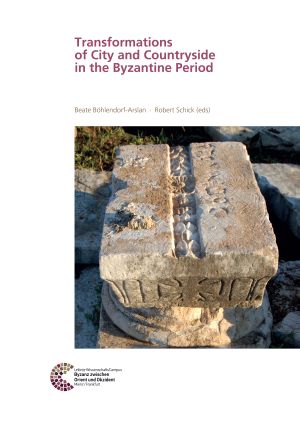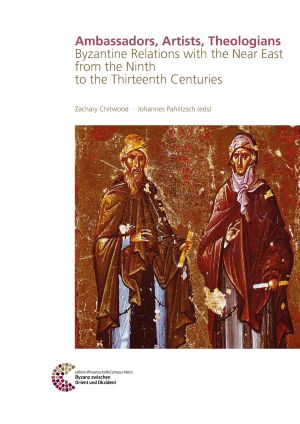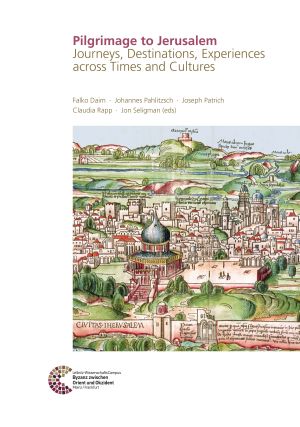Schick, Robert
Transformations of City and Countryside in the Byzantine Period
Der Begriff der "Transformation" oder einfach "Umgestaltung" enthält sowohl die Elemente des Bleibenden, des Konservativen, den Kern des Fortbestehenden, als auch die Elemente des Veränderten, des Innovativen.
Im Rahmen dieser Publikation von Beiträgen einer Tagung aus dem Jahr 2016 zum Thema "Transformationen von Stadt und Land in byzantinischer Zeit" lenken wir die Aufmerksamkeit auf diese Dichotomie und untersuchen die soziale Dynamik hinter den Veränderungen des städtischen und ländlichen Lebens in byzantinischer Zeit, die sich durch Archäologie, Geschichte und Kunstgeschichte nachweisen lassen.
Das Byzantinische Reich ist ein idealer Gegenstand, um zu untersuchen, wie soziale Transformation abläuft, was sie auslöst, welche Faktoren ihr zugrunde liegen und welche Prozesse dabei ablaufen. Wer waren die Agenten der Transformation und wie veränderten sie und ihr Umfeld sich? Wie flexibel waren der Staat oder seine Bürger im Umgang mit externem und internem Innovationsdruck? Auf welche Weise und in welchem Maße konnten die Byzantiner im Zuge dieser Anpassungsprozesse ihre Identität und den inneren Zusammenhalt ihres Reiches bewahren?
Ambassadors, Artists, Theologians: Byzantine Relations with the Near East from the Ninth to the Thirteenth Centuries
Die Autoren des Sammelbandes »Ambassadors, Artists, Theologians: Byzantine Relations with the Near East from the Ninth to the Thirteenth Centuries« untersuchen die komplexe Dynamik zwischen dem Byzantinischen Reich und dem Nahen Osten.
Die hier gesammelten Beiträge gehen über die Tradition des histoire événementielle hinaus und verdeutlichen den Übergang künstlerischer Praktiken, Ideen und Gesprächspartner zwischen Byzanz und der islamischen Welt. Auf diese Weise versucht dieser Band, unser Verständnis der Beziehung zwischen diesen beiden mittelalterlichen Kulturbereichen zu nuancieren und zu kontextualisieren.
Pilgrimage to Jerusalem. Journeys, Destinations, Experiences across Times and Cultures: Proceedings of the Conference held in Jerusalem, 5th to 7th December 2017
Jerusalem ist eine Stadt, die drei Weltreligionen heilig ist: dem Judentum, dem Christentum und dem Islam. Seit frühbyzantinischer Zeit entwickelte sich die christliche Pilgerfahrt zu dieser und anderen heiligen Stätten zu einem "Massenphänomen". Tausende Christen machten sich auf den Weg zu heiligen Stätten in Palästina, Ägypten und anderen Orten, um die Heilsgeschichte physisch zu erleben und um göttliche Intervention in ihrem Leben zu suchen. Zahlreiche Reiseberichte, Pilgerführer und andere schriftliche Quellen heben wichtige Aspekte der Pilgerfahrt hervor. Darüber hinaus bieten uns viele gut erhaltene Kirchen, Klöster, Herbergen und andere Gebäude sowie die reichhaltigen archäologischen Funde, ein lebendiges Bild der Geschichte der Pilgerfahrt ins Heilige Land.
Für Seelenheil und Lebensglück: Das byzantinische Pilgerwesen und seine Wurzeln
Die internationale Abschlusskonferenz des Projekts »Für Seelenheil und Lebensglück. Das byzantinische Pilgerwesen und seine Wurzeln« vom Dezember 2015 versammelte Wissenschaftlerinnen und Wissenschaftler aus den Disziplinen von Archäologie, Byzantinistik, Kunstgeschichte, Geschichtswissenschaften, Religionsgeschichte, Epigraphik und Historischer Geographie, die sich dem Phänomen der Pilgerfahrt im Byzantinischen Reich widmeten.
Die Beiträge erörtern die Zusammenhänge des byzantinischen Pilgerwesens mit der heidnischen und jüdischen Pilgerfahrt. Vor allem aber präsentieren und diskutieren sie die Praxis des Pilgerwesens zwischen »Kult und Kommerz« im sakraltopographischen und landschaftlichen Kontext einzelner Regionen und Orte des Byzantinischen Reiches von Ägypten bis Bulgarien und von Süditalien bis zum Heiligen Land.










